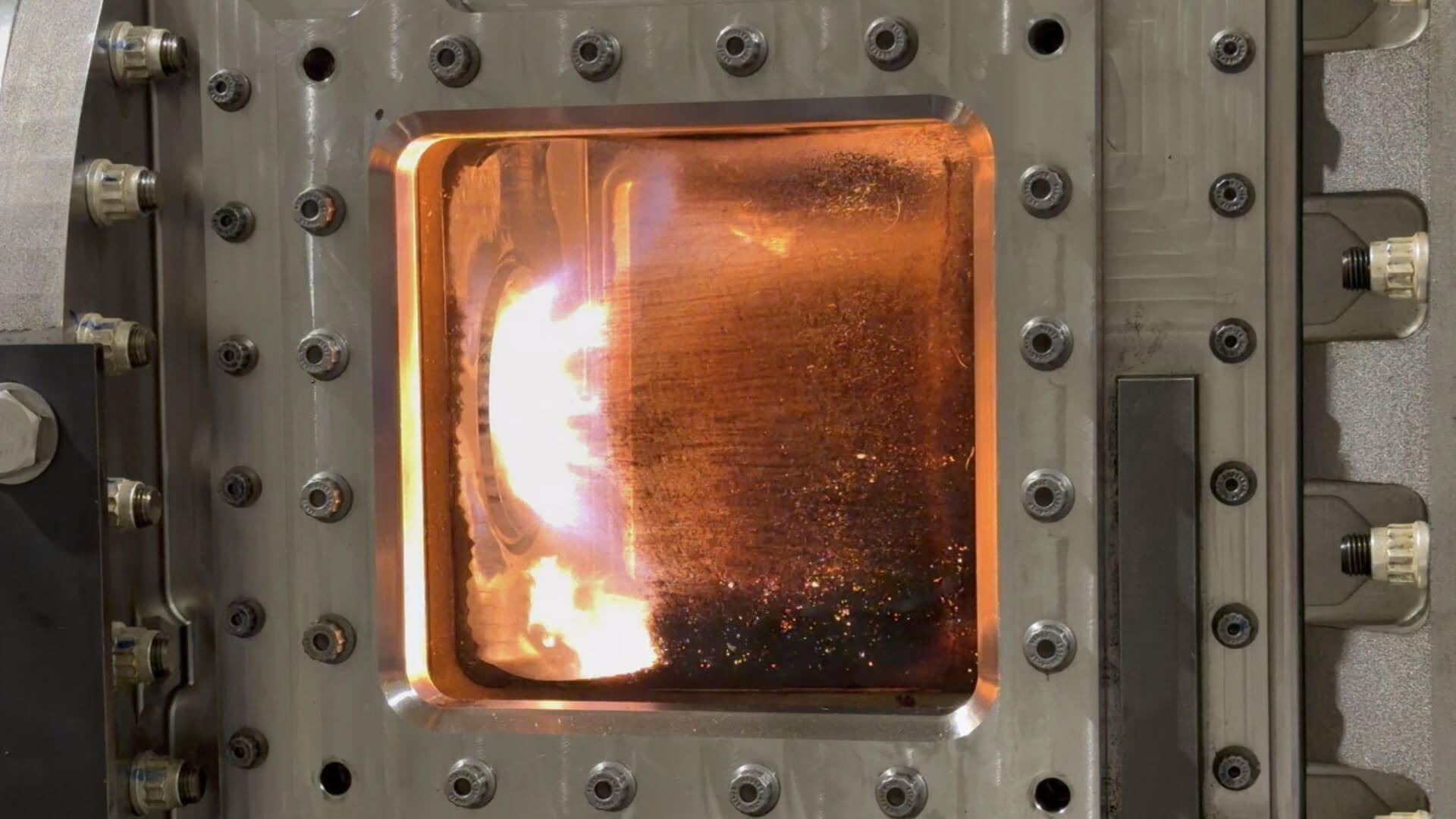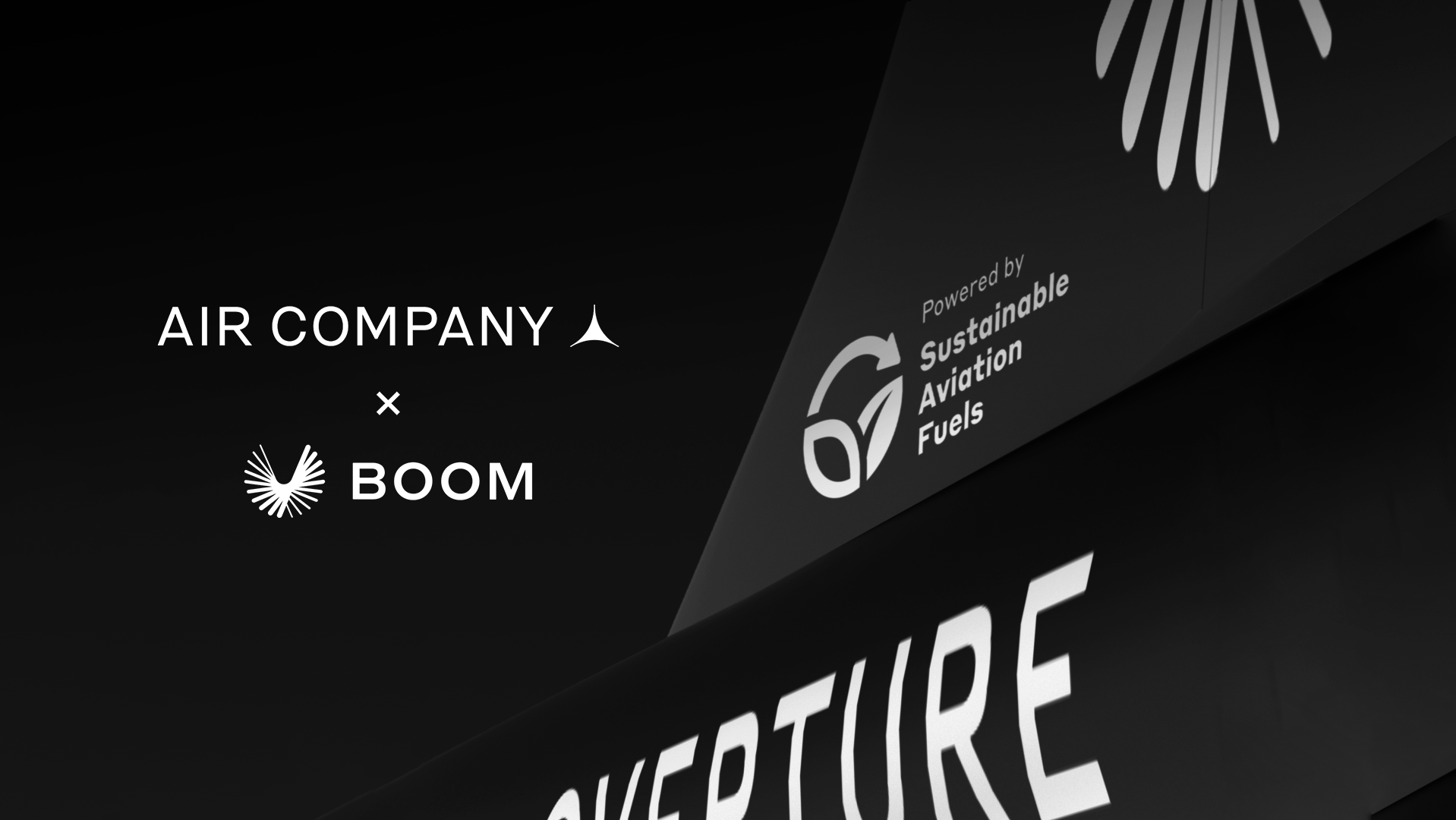What if CO2 in the atmosphere could power an airplane? That’s a question AIR COMPANY asked themselves — and answered with AIRMADE™ SAF.
The aviation industry contributes to CO2 in our atmosphere. Commercial airplanes and large business jets contribute about 10 percent of transportation emissions, a figure expected to triple by 2050 as air travel continues to grow. So what if you could power flight sustainability by harnessing CO2 before it reaches the atmosphere? That’s why Boom Supersonic partnered with AIR COMPANY for a sustainable aviation fuel (SAF) offtake agreement.
AIR COMPANY will provide up to 5 million gallons of AIRMADE™ SAF on an annual basis over the duration of the Overture flight test program, advancing Boom’s net zero carbon commitments. Using the same patented and proprietary technology used to create its consumer ethanol, AIR COMPANY has developed and deployed its single-step process for CO2-derived fuel production using renewable electricity.
“Given the criticality of SAF to rapidly decarbonize aviation, Boom and our customers have a responsibility to help net-zero carbon SAF scale,” said Ben Murphy, Boom’s VP of Sustainability. “Early buy-in from future SAF users like us sends a critical signal to researchers, producers, and investors that the demand is there.”
So how does the AIRMADE™ Technology work? AIR COMPANY is already using their technology to make sustainable, carbon-negative products such as fragrance and vodka.
Their process includes five steps:
- CO2 Capture: The CO2 used in their production is captured and sourced from industrial plants prior to it being emitted into the atmosphere. It then arrives in tanks after it has been cooled, pressurized and liquified.
- Electrolysis: AIR COMPANY creates their own green hydrogen through on-site electrolysis with renewable energy. Their electrolyzer splits water (H2O) into hydrogen (H2) and oxygen (O2). The created oxygen gas is released as clean air into the atmosphere, and the hydrogen gas is fed into the Carbon Conversion Reactor with the captured CO2.
- Carbon Conversion: Their patented and proprietary Carbon Conversion Reactor system is where the captured CO2 and green hydrogen (H2) meet and are converted. Within their Reactor is a tubular, fixed-bed flow system. The CO2 and H2 rise to each tube, which are filled with the company’s patented catalyst. This facilitates a chemical reaction that produces a reactor liquid. The reactor liquid is composed of alcohols, alkanes, and water.
- Distillation: AIR COMPANY’s proprietary distillation process separates the components of the reactor liquid. Alcohol (such as our ethanol and methanol), alkanes, and water all have different boiling points, and therefore when heated to a specific temperature, separate.
- Outputs: Their impurity-free, carbon-negative AIRMADE™ alcohols and alkanes are funneled into separate totes and are either distributed to their partners, or are used in their own AIR products. The water that is created is fed back into the electrolyzer to begin the process again.
By scaling this technology within air travel and all other applicable industries, the projected impact could avoid 10.8% of global CO2 emissions, the equivalent of more than 4.6 billion tons of CO2 annually.
Boom’s agreement with AIR COMPANY is the latest in a series of milestones Boom has achieved on its path to bring sustainable supersonic flight to millions of travelers. Boom was also the first aircraft manufacturer to sign the Amazon Climate Pledge in 2020, committing to achieving the goals of the Paris Agreement by 2040.
Boom recently released its findings after conducting extensive research analyzing key drivers required to achieve exponential growth in the SAF industry. Emerging SAF technologies can reduce up to 100% of carbon emissions compared to traditional jet fuel it replaces.
While SAF production is still in its infancy, the SAF industry is well poised to achieve exponential growth seen in other renewable energy sectors. If SAF scales at the rate of solar energy, it could reach projected international jet fuel demand by 2036. This growth is necessary to address the global demand for aviation fuel with SAF in the 2030-2045 timeframe.
Read more about SAF in Boom’s white paper.







